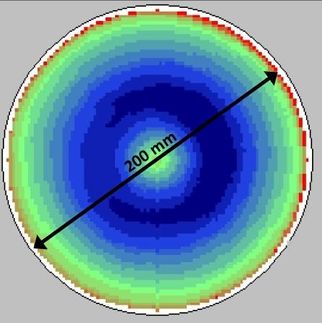Plastic Electronics on the Way
New organic semiconductors: the arrangement of their molecular building blocks determines whether they are n-type or p-type
Future generations of many electronic components will no longer be based on silicon, but rather on organic semiconductors, which can be made considerably smaller and more flexible. American researchers at Northwestern University and at Lucent Technology's Bell Laboratories have now developed a new class of compounds with interesting electronic properties, which could be a giant step forward for these "plastic electronics".
Electronic components are often built up out of several, electronically different layers. Transistors thus consist of three layers, as either pnp- or npn-transistors. The p and n stand for two contrasting types of material: in n-type materials, charge transport occurs by means of electrons, whereas in the p-type "holes", that is the places where electrons are missing, are transported instead. Both types of materials are also used for the production of organic thin-film transistors. The problem is that relatively few n-type organic semiconductors have been discovered thus far.
Tobin J. Marks and his group have now succeeded in developing a class of compounds that can be both p-type and n-type semiconductors. What is especially clever about their new concept is that the semiconductor type depends only on the different arrangement of two molecular building blocks.
The starting point was a rod-shaped molecule consisting of six linked thiophene units (a five-membered ring with four carbon atoms and one sulfur atom). The researchers replaced two of the thiophenes with perfluoroarene building blocks, six-membered carbon rings saturated with fluorine atoms. Depending on which of the six thiophenes are replaced (the two outermost, the two next-outermost, or the two innermost) semiconductors with distinctly different crystalline and electronic properties are produced. The first two combinations result in compounds that form thin films with excellent semiconductor properties. Amazingly, the first compound is an n-type semiconductor, while the second is of the p-type. In contrast, the third compound is not a particularly effective semiconductor.
"This result cannot be fully explained by current theories," says Marks. "Our compounds should help us gain new fundamental knowledge about the design of organic n-semiconductors, and this is under active investigation by our team."
Most read news
Topics
Organizations
Other news from the department science

Get the chemical industry in your inbox
From now on, don't miss a thing: Our newsletter for the chemical industry, analytics, lab technology and process engineering brings you up to date every Tuesday and Thursday. The latest industry news, product highlights and innovations - compact and easy to understand in your inbox. Researched by us so you don't have to.




























































